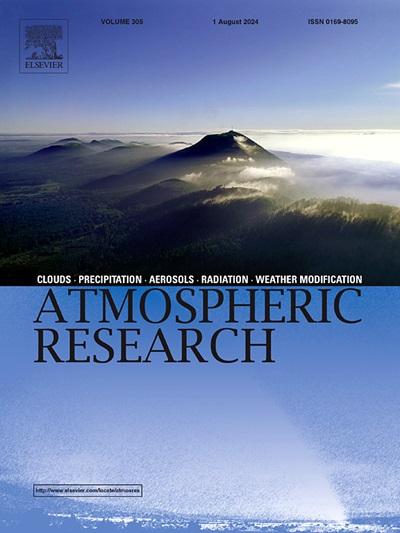Comparative analysis of bias correction methods for projecting extreme precipitation and temeprature indices in Pakistan
IF 4.5
2区 地球科学
Q1 METEOROLOGY & ATMOSPHERIC SCIENCES
引用次数: 0
Abstract
This study evaluates the performance of twelve bias correction (BC) approaches, encompassing machine learning and traditional statistical methods, in reproducing temperature and precipitation extreme indices developed by the Expert Team on Climate Change Detection and Indices (ETCCDI) for the period 1975–2014. Among the evaluated methods, power transformation and variance scaling emerged as the most effective techniques for correcting biases in precipitation and temperature extremes. The bias-corrected climate variables were utilized to assess spatiotemporal changes in extreme indices across Pakistan for two future periods. Results demonstrated that the selected methods significantly reduced biases in all climate variables, yielding notably improved precipitation and temperature extreme indices compared to raw GCM outputs. Multimodel ensemble median projections under different Shared Socioeconomic Pathways (SSPs) indicated a consistent increase in temperature indices, with the most pronounced changes under SSP585. The mountainous northern region exhibited the highest increases in indices such as TXX (4.5 °C), TNN (>4.5 °C), and Prcptot (80 mm), while the arid western parts showed significant rises in TXX (4.0 °C), TNN (>4.5 °C), TR (80 days), and SU (60 days) in the late future. In the southern region, notable increases in RX1day (15 mm), CDD (20 days), and Prcptot (80 mm) were observed under SSP585. These findings highlight that mountainous northern and western arid areas will face heightened risks of extreme temperature events, while southern regions will be increasingly exposed to extreme precipitation.
求助全文
约1分钟内获得全文
求助全文
来源期刊

Atmospheric Research
地学-气象与大气科学
CiteScore
9.40
自引率
10.90%
发文量
460
审稿时长
47 days
期刊介绍:
The journal publishes scientific papers (research papers, review articles, letters and notes) dealing with the part of the atmosphere where meteorological events occur. Attention is given to all processes extending from the earth surface to the tropopause, but special emphasis continues to be devoted to the physics of clouds, mesoscale meteorology and air pollution, i.e. atmospheric aerosols; microphysical processes; cloud dynamics and thermodynamics; numerical simulation, climatology, climate change and weather modification.
 求助内容:
求助内容: 应助结果提醒方式:
应助结果提醒方式:


